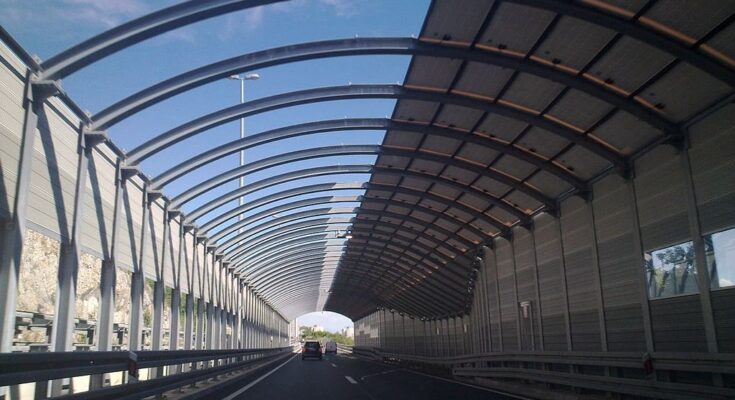Noise pollution is an often-unseen disruptor of our peace and well-being. It seeps through our cities, homes, and offices, driving up stress levels and diminishing our quality of life. Enter noise barrier sheets in Singapore, the unsung heroes of silence in the cacophony of urban landscapes.
From the design table to the construction site, architects, engineers, and planners are leveraging the potential of these unassuming layers to shape acoustically optimised spaces. But how do they work? And what are the factors that make them so effective?
Introduction to Noise Barrier Sheets
A noise barrier singapore, also known as soundproofing materials or acoustic barriers, are thin layers designed to either absorb or reflect sound waves. They are an integral part of construction elements like walls, floors, and ceilings, and outdoor noise barriers that line highways, railways, and even sensitive machinery enclosures.
These sheets not only protect us from unwanted racket but also improve the audio environment for better speech intelligibility and sound quality. In this article, we will primarily focus on the types used within architectural and urban settings.
How Noise Barrier Sheets Absorb Noise
Noise absorption is about converting sound energy into heat. Porous materials, such as foam, mineral wool, or fiberglass, are excellent noise absorbers. The key is to create enough surface area within the material for sound waves to enter and lose energy via friction and air compression.
For noise barrier sheets, the goal is to construct a material that is dense enough to block sound but still somewhat porous to allow for absorption. These materials are often placed where there is a critical need for noise reduction, such as between noisy machinery or along wall panels in a concert hall.
Material properties, thickness, and the design of the barrier all play a role in its absorption capabilities. High-density materials provide better noise reduction, but the design must ensure they are not reflective, which can cause secondary noise. Modern barrier sheets are engineered with complex structures that include air gaps and multiple layers to enhance absorption without making them bulky or heavy.
Blocking Different Frequencies of Noise
Noise comes in various frequencies, and in the case of urban environments, it is a mix of low, middle, and high-frequency sounds. Each of these requires a different approach to block effectively. For low-frequency noise, mass is key.
Heavy materials like concrete and certain metals are good at stopping low-frequency bass, which is why you’ll often see or hear about solid barriers in soundproofing projects. Mid-range frequency noises, such as traffic or voices, are best tackled with damping materials that can disintegrate sound waves, such as rubber or viscoelastic compounds.
High-frequency sounds, the bane of silence, require reflective or absorptive surfaces that interrupt the short waves. Barrier sheets can be engineered with specific surface textures to effectively absorb or scatter high-pitched noise.
A common technique is to introduce thin fibrous materials angled toward the source of the noise, which causes sound waves to bounce and be absorbed multiple times, effectively reducing the transmission of noise across the barrier.
Applications in Architecture and Urban Planning
The integration of noise barrier sheets into the architectural fabric is essential to combat noise pollution, especially in high-density urban environments. They are used in a variety of structures, including residential buildings, offices, concert halls, and civic centers, to ensure a peaceful living and working environment.
In urban planning, noise barriers along highways and railways protect nearby communities from the droning and rattling of traffic. For example, in the design of residential towers in close proximity to airports or busy streets, noise barrier sheets are seamlessly built into the walls to aid in the reflection and absorption of sound, augmenting traditional construction materials for optimal acoustic performance.
Benefits of Using Noise Barrier Sheets
Integrating noise barrier sheets into design and planning offers several benefits. It contributes to a more sustainable urban environment by reducing noise pollution and supporting noise regulations. Noise reduction also has direct health benefits, including lowering stress levels, improving sleep quality, and enhancing focus and productivity in work and learning environments.
Noise barriers are also key to developing inclusive designs. Acoustic inclusivity ensures that spaces are accessible to individuals with hearing impairments, enhancing their safety and ease of communication.
Employing noise barrier sheets as part of a comprehensive acoustic design strategy can also lead to more efficient energy usage, as quieter spaces often require less ventilation and cooling, supporting the efforts to create net-zero carbon buildings.
Future Trends and Innovations
The field of noise barrier technology is seeing significant advancements and innovative applications. One promising trend is the development of smart barrier systems that adapt to changes in environmental noise levels by using sensors and actuators to fine-tune their acoustic properties in real-time.
Additionally, research is focusing on biodegradable and sustainable materials for noise barriers, aligning with the global shift toward eco-friendly architecture. Future innovations may see the incorporation of living noise barriers, such as green walls or grassy berms, that not only block sound but also contribute to improved air quality and aesthetics.
Noise barrier sheets are an indispensable tool in the quest for acoustic comfort and tranquility. They serve as a reminder that, in the complex symphony of city sounds, intentional design can create space for the sweet music of silence. As technology and materials continue to evolve, the role of noise barriers in shaping our sensory landscapes will only grow, ensuring that the future is not just visually breathtaking, but harmoniously silent.




